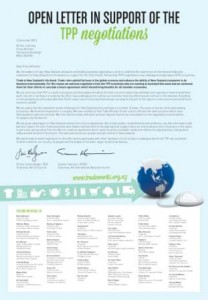More value is to be generated from beef with the development of innovative new products for food, ingredients and healthcare, thanks to the latest Primary Growth Partnership (PGP) programme.
PGP co-funding has been approved by the Ministry of Primary Industries (MPI) for an $87 million Foodplus programme, run by meat processor and exporter Anzco Foods. The PGP fund is committing $43.5 million over seven years towards the programme, with ANZCO matching that funding.
Foodplus will identify opportunities to create new products, with a particular focus on parts of the beef carcase that currently generate less value. ANZCO has identified three markets for innovative new products: food, ingredients and healthcare.
“Adding further value to the carcase is essential for the future success of the meat industry,” MPI director-general Wayne McNee says. “ANZCO’s vision for Foodplus is relevant and bold and now backed by a significant investment.”
 ANZCO Foods chairman, Sir Graeme Harrison is enthusiastic about the potential of the new Foodplus programme to enhance business opportunities for the sector.
ANZCO Foods chairman, Sir Graeme Harrison is enthusiastic about the potential of the new Foodplus programme to enhance business opportunities for the sector.
It will give a vital boost to the industry, he says. “For too long, the meat industry has been criticised as being a production-led commodity business characterised by high volatility and marginal profitability. This government-industry partnership provides a springboard to further transform our industry, to leverage off the inherent strengths of our farming practices and animal health status and to collaborate and capitalise on the benefits of quality New Zealand research and innovation.”
“As Foodplus begins to use the PGP’s comprehensive research opportunities, ANZCO will introduce more projects that will certainly challenge and re-invent the traditional uses of beef cattle in particular.
“The Foodplus initiative will build on the existing expertise within ANZCO Foods but also add considerable new processes and opportunities never before realised in the meat industry,” says Sir Graeme.
Rennie Davidson, chief executive of ANZCO’s Food & Solutions division says ANZCO welcomed the opportunity to partner with the Crown on the Foodplus programme. “It is a large-scale project that wouldn’t be achievable without collaboration. We’re excited about the potential that this will bring to the sector.”
The company also recently announced a company-wide energy management programme, which will see it working with the Energy Efficiency Conservation Authority’s business unit over two years to achieve savings of $2 million a year in its processing plant energy usage.
ANZCO Foods is a multinational group of companies and one of New Zealand’s largest exporters, with sales of $1.3 billion and employing more than 3,000 staff worldwide.
This article has appeared in Food NZ magazine (February/March 2013) and is reproduced with kind permission.







